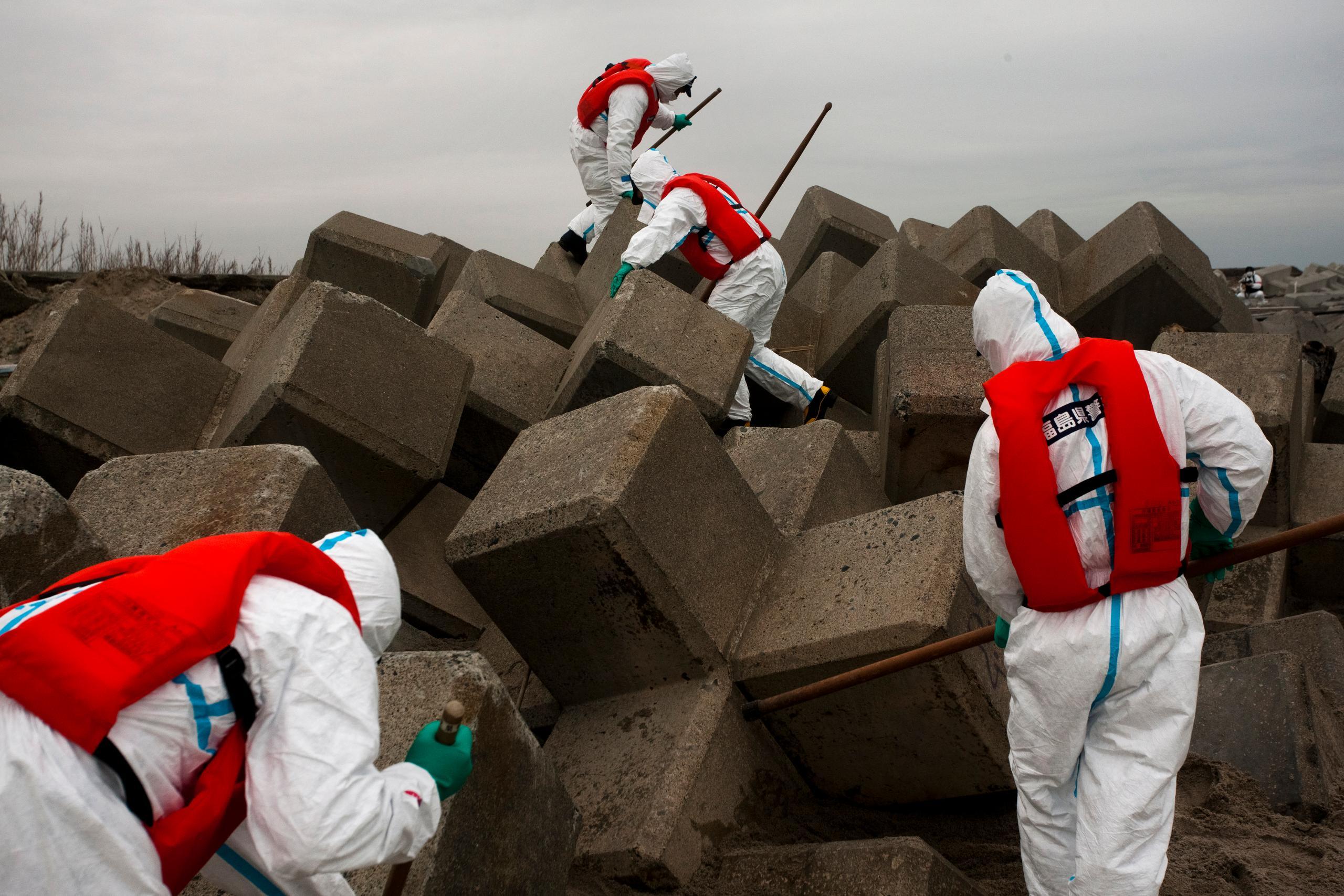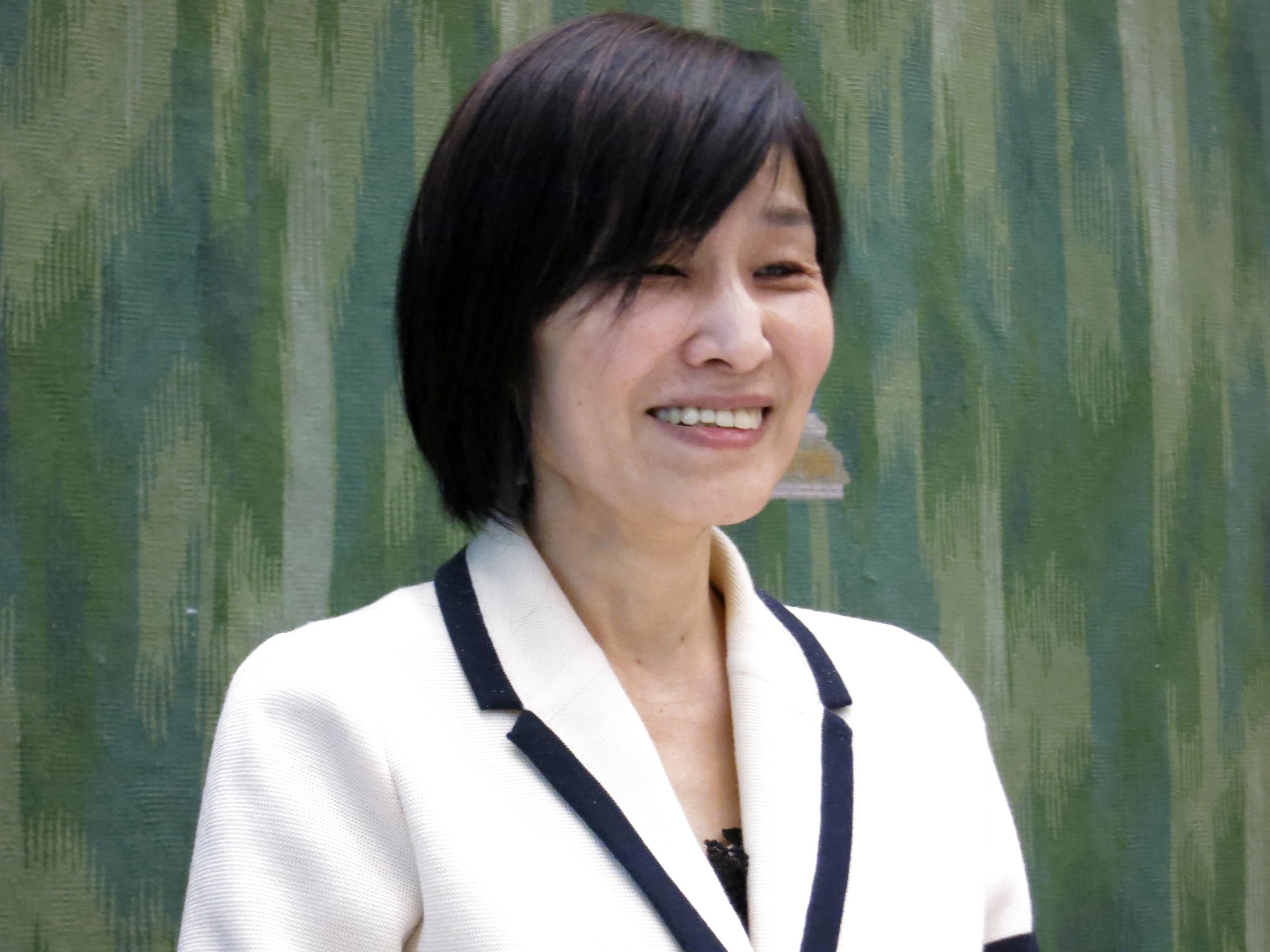
The butterfly effect of Fukushima

The consequences of the nuclear disaster at Fukushima five years ago surfaced in a terrible way in serious mutations in butterflies. This discovery is owing to the tireless work of the Japanese researcher Chiyo Nohara, who died a few months ago.
The Japanese editorial team at swissinfo.ch met her at a conference in Switzerland in 2014.
“I had nothing to do with Fukushima before that,” Nohara recalled in the below interview, which took place at a symposium on “Effects of Radiation on Genetics” in Geneva, when she was already seriously ill.
“After the nuclear accident, I worried about it constantly, as if my daughter were living there. I wanted to go straight to Fukushima to see with my own eyes what happened there.”
That desire was the catalyst for her decision to devote herself to researching butterflies.
Nohara had little to do with sciences originally. At Aichi University, a few hundred kilometres south of Tokyo, she was a professor teaching public administration auditing. Later she switched to environmental studies and moved to the southern island of Okinawa, where she taught at the Ryukyu University.
On March 11, 2011, the triple disaster of an earthquake, a tsunami and a nuclear accident hit Fukushima. Nohara immediately urged the university to research changes in butterflies.

More
Life after Fukushima
As Professor Joji Otaki was already researching gossamer-winged butterflies, it made sense to choose this variety. The pale grass blue, a sub-species of gossamer-winged butterflies, is the most common butterfly in Japan.
In May 2011 the researchers collected male butterflies which had suffered radioactive contamination in the towns of Fukushima and Motomiya, about 60 kilometres northwest and west respectively from the nuclear power station. They could ascertain on the spot that their wings were smaller than those of the same species in places farther away.
Back in Okinawa, they bred a first generation of contaminated butterflies in the laboratory.
They noted delays in development in pupation and hatching and a high rate of abnormalities. The closer to the nuclear power station the fathers had been found, the more likely it was that their offspring would show abnormalities.
The second-generation young showed not only similar mutations to their parents, but also had completely abnormal body parts, such as a forked antenna.
Additionally, the team researched the effects of radiation by artificially contaminating healthy butterflies from Okinawa and feeding them with radioactive creeping wood sorrel to contaminate them internally.
Here too they identified falling survival rates, a reduction in the wing size and physical abnormalities.
“With this we were able to confirm the findings from the butterflies we had collected in the laboratory,” Nohara said. She published her research in 2012 in the specialist magazine Nature.
The interview was done on November 29, 2014

swissinfo.ch: Why did you travel to Fukushima two months after the nuclear accident to collect samples?
Chiyo Nohara: Actually, there was still a danger of further accidents at the nuclear power station, from aftershocks for example. But I was absolutely determined to collect contaminated butterflies that had wintered as larvae in Fukushima.
In Chernobyl, an investigation of organisms didn’t take place until five years after the accident. I wanted to avoid that.
At the end of May, I visited various places with Professor Otaki and two other researchers. We wanted to compare our samples against those from Tokyo and other cities.
swissinfo.ch: You used to conduct audits for public administration organisations. Now you are counting mutated butterflies and looking for physical abnormalities. Is this a completely different world?
C.N.: I was not in a position to reflect on the change in my situation. Day-to-day life was extremely demanding and time was very short.
Every ten days, I visited the district of Fukushima and collected radioactive creeping wood sorrel. I fed this to the butterflies in order to contaminate their internal organs.
I flew from Okinawa to Tokyo, drove by car from there on to Fukushima, looked for creeping wood sorrel and at the same time for a courier service which could fly the fresh sorrel three or four times a day to Okinawa.
I spent three nights there each visit. On returning to Okinawa in the evening, I went straight to the laboratory to feed the butterflies the whole night through.
I wanted to relieve the researchers who had been doing this task while I was away. We worked like that for a year and a half.
swissinfo.ch: Which experiment made the greatest impression on you?
C.N.: The experiment concerning internal radiation. We fed some with the contaminated sorrel and we fed the control group with uncontaminated sorrel from western Japan.
We could see that all the incubated butterflies which ate sorrel from Fukushima moved much more slowly than those in the control group.
That was a huge shock for me.
I thought – this is the illness that became known colloquially as “Genbaku Bura-Bura” after the nuclear attack on Hiroshima (Genbaku = Nuclear bomb attack, bura-bura = protracted.)
swissinfo.ch: What are your newest findings?
C.N.: Our recently published observation results on internal radiation are very interesting, and for me they are a ray of light in the dark.
We divided the larvae from the first laboratory generation, all the offspring of the contaminated butterflies from Fukushima, into two groups. One of them ate contaminated sorrel; the other ate sorrel from Okinawa. As we expected, the death rate and rate of abnormalities in the first group were higher than in the Okinawa group.
But already by the second generation, it looked different: The survival rates of the contaminated group which were fed on Okinawa sorrel were just as high as those of the Okinawa group which had been fed on uncontaminated sorrel since the first generation. There is a certain probability that this also applies to people.
So the survival rates in successive generations will no longer be adversely affected as long as they always eat uncontaminated food. So in that sense the results gave me hope.
swissinfo.ch: This experiment received a lot of attention at this high-profile symposium in Geneva…
C.N.: That is true. The interest was big, because the survival and normality rates improved again in the second laboratory generation.
But I would like to mention two more points: First, the death and abnormality rate among the first-generation butterflies which received contaminated sorrel remained just as high.
Secondly, we cannot rule out genetic damage to the second generation, even if the survival and normality rates increased thanks to the healthy food from Okinawa.
One participant in the symposium applied our results to people, and said it is problematic that the children of contaminated parents in Chernobyl stay there and continue to eat contaminated food.
It is true that we often hear of children in Chernobyl suffering from various physical and mental problems and even committing suicide, or that fathers cannot bear the burden of their children and leave their families. The people who came from Fukushima to Okinawa also suffer a variety of symptoms.
These victims of radioactive contamination must be looked after by their societies. We also need support centres with appropriate therapies and counselling on offer.
We must learn from the experiences of Chernobyl and it is imperative to set up centres for information exchange so they are not alone.
Alongside my research, I am working with some people who came to Okinawa from Fukushima to look for ways to set up such centres.
Chiyo Nohara was a member of the research team, led by Joji Otaki of Ryukyu University, that published the first scientific evidence of harm to a living organism from radioactive contamination due to the accident at the Fukushima nuclear power plant.
Previously she taught public administration auditing at Aichi University. Nohara did part of her PhD in marine and environmental studies at the Graduate School of Engineering and Science at Ryukyu University.
She died in Okinawa on October 28, 2015 following a long illness.
Translated by Catherine Hickley

In compliance with the JTI standards
More: SWI swissinfo.ch certified by the Journalism Trust Initiative




























You can find an overview of ongoing debates with our journalists here . Please join us!
If you want to start a conversation about a topic raised in this article or want to report factual errors, email us at english@swissinfo.ch.